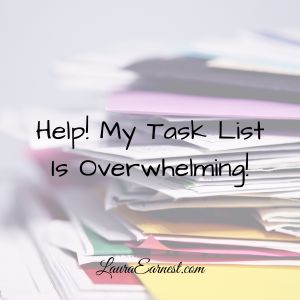There was a time when I would stumble out of bed with just barely enough time to throw on clothes and get to work. The end result what that I would get to work already stressed out, feeling frantic. I began to implement a morning routine after I read The Miracle Morning* and began to see my life change. But the five areas laid out in the book were soon not enough. I decided to expand on it.
I’ve talked about how to build a morning routine before, but I’ve never really talked about how I chose what to put into the routine. So today were are going to go over twelve categories that can be included in a morning routine to give yourself a better start for the day.
After I sat down and went through these areas, I was able to craft a workable routine that really does make a difference in how my day goes. I find that if I skip the routine, it means the day will be tense, frantic and stressful.
Building Your Routine
Nobody’s routine should be the same as anyone else’s, because we are all individuals. But where do you start in building a routine? Here are the twelve areas I have pulled from for my morning routines, past and present.
Meditation
My mind’s natural state seems to be movement. I was constantly thinking and used to having my thoughts pinball all over my skull all day. Inevitably that meant that I was always in my head, and at times oblivious to things going on around me.
Meditation gives me a way to calm that down and take time to notice where I am and how I am feeling in the moment.
I do a three part meditation every day: five minutes of just quiet, focusing on my breath; five minutes of guided meditation to my “happy place”: a forest grove; and five minutes focusing on how I am feeling in my body, relaxing places that are tense.
Brain Dump
Many years ago I read The Artist’s Way* by Julia Cameron. In that book she recommended doing five pages of free writing by hand every morning. This was supposed to get the creative juices flowing.
Doing morning pages does actually get your brain warmed up for the day. It can also clear out anything that might be bugging you. It’s not to be confused with journaling, where you are supposed to be coherent. Morning pages are a brain dump, where you write without stopping until you hit your quota.
I don’t have the patience to write five pages by hand every day. Instead I use an iOS app called MorningPages, and I have a quota of 500 words. I find myself drifting from time to time, and I remind myself it is perfectly OK to keep typing “My mind is empty” over and over again if I cannot make a coherent thought. I have found that this really does jumpstart my creativity.
Reading
I always complained that I didn’t have time to read non-fiction every day. I had plenty of time to read fiction, though, so I knew it was about making it a priority. It’s just that I find fiction so much more fun than non-fiction. Still I needed a way to make it happen.
Reading in the morning, whether it is fiction or non-fiction, is a way to open your mind to other inputs and ideas.
I have three books that I read each day. The first two are dated daily readers, the second one is a book on self-discipline. When the self-discipline book is done, I will choose another self-improvement book. I have found that this is the only way that any of these three books will get read regularly.
Journaling
Many things that happened in the days before my morning often are with me when I wake up. Things I wish I had said in the moment (because I can never think of a snappy comeback at the time), things I wish I hadn’t said, or situations that are not sitting easy with me seem to be on my mind as soon as I wake up.
Journaling is a way to put coherent thoughts about a single subject down in one place. It is a good way to clear the mental and emotional baggage that has come with you into the new day.
I use an iOS app called DayOne for journaling. It allows me to write as much or as little as I want, as well as provide me a prompt if I am stuck. I have found that this allows me to clear the boards in preparation for a new day.
Visualization
Most people who are into productivity are about doing. We want to learn how to do more and do it better and faster. And even though we have specific outcomes in mind, most people don’t take the time to visualize what the outcome looks and feels like.
A study found that physical strength can be gained by using the mind, and more studies have found that thoughts produce tthe same mental instructions as actions. This is why so many elite athletes practice visualization as way to up their games. Doing visualization about the events of the day as well as the desired feelings, in as much detail as possible, gives you a leg up on achieving those results.
I spend a few minutes every morning focusing on how I will feel at certain times of the day. This has led me to be less stressed and happier during the various points of time.
Moving the Body
When you are younger, moving the body isn’t as difficult as it can be when you’re older. Physical education teachers taught me all the right moves to stretch out my body, but I never did them regularly after I left high school. After a recent flare of of plantar fasciitis (that originally occurred during my teaching days), I realized that stretching is no longer optional.
Some people prefer to get their physical exercise out of the way for the day at this point. Whether it is hitting the gym, running or even walking, moving the body can loosen everything up as well as give you a boost of energy. Morning exercise has also been shown to increase information retention throughout the day.
I spend time doing a series of yoga and physical therapy stretches every morning to deal with hip, back and foot issues. Without them, I am at the least uncomfortable, and at the most in outright pain by late afternoon.
Stretch the Brain
I am not a morning person. For years I relied on coffee to wake me up. I still drink coffee, but I had to cut back on caffeine last year (because sleep) and I often found myself unable to react to the various crises that may hit me as soon as I get to work. Being the first one of the team in each morning, I get to do peak troubleshooting, which is nearly impossible if I am not alert.
Stretching the brain is akin to doing the exercise in the morning. It clears the fog and gets you ready for whatever may come at you.
I use the iOS SudokuOTD app to do four puzzles each morning. I find that by the time I am done I am wide awake. I fully understand that to many people, doing math first thing in the morning would not be palatable, but you can pick a mentally challenging activity that is more in your line instead.
Gratitude
With my focus on doing, I often lose track of what I’ve done and what I have. Days can pass between the times when I remember how good I actually have it.
Gratitidue can help you be more optimistic and feel better about your life. It can also increase your patience and make you more satisfied with your life.
I write down three things I am grateful for in my bullet journal entry for the day. That way I see them throughout the day and can be reminded for what I am grateful for. I think it leads me to be more satisfied with my life and happier throughout the day.
Hydrate
I used to not drink any water until I was done with my coffee consumption for the day. Coffee isn’t a hydrator, and doesn’t count as water (I’ve checked). It also doesn’t quench the mild thirst I have every morning.
Drinking water aids in digestion, metabolism and flushing out sickness. Doing it first thing in the morning also increases alertness.
I generally put a glass of water on my bedside table to drink during the night if I need it. I then drink what remains first thing in the morning. I can’t say that I really have noticed any benefit, but I’m taking it on faith.
Eat
Most people understand that the first meal of the day is important, but most people in the rush of the morning, skip their breakfasts. I know that while I don’t necessarily feel like eating right away in the morning, but if I forget then I get spacey and grumpy as my blood sugar plummets.
Eating a proper breakfast – with protein and long-lasting fiber – can sate your hunger and provide the fuel you need to get through the morning.
Eating my breakfast of yogurt and fruit, eggs and toast or porridge with fruit and nuts, while I read the comics, gives me a solid start. I find that I can usually last until around eleven and have enough energy to focus on my morning tasks.
Dress
While many people have gone back to working in offices, I am still working from home. It is very tempting to sit down at the computer in exercise clothes or pajamas. After all, who really knows what I’m wearing.
Some believe that getting dressed is an important part of mental hygeine.
I get dressed the last thing before I start my day. I may still be wearing exercise clothes, but they are at least fresh. And I make sure that I have done my hair and face as well. I don’t know that it provides much more for me than a sense of being ready for anything.
Review Your Day
How many people plunge into their day wihtout any concept of what is on the slate can mean that you are unprepared for what is scheduled. I know that when I don’t look at my day, my task list remains largely undone and many things get pushed to the next day.
Reviewing your day can help you level-set. It is easier to face a busy day when you know it will be busy.
I spend a few minutes filling out my daily entry in my bullet journal to get a sense of what is coming my way.
I didn’t do all of these things in my daily routine, and even now some of these shift in what they contain from time to time. Things expand and contract as my life changes, and I adjust myself to what is important at the time.
Recent additions are the daily stretching, which I previously did in the evening 3-4 times a week. Stretching the brain used to be reading twenty pages in a technicial book, but I needed to contract my time, and so it became sudoku. I’m working on getting the hydration integrated, and recently have stepped back from the visualization and gratitude practices as I adjust to the later sunrises.
When you go to create your own morning routine, start small, and choose what resonates best with you.
If you would like a copy of the morning menu of suggestions, please fill in the form below.








A very timely article for me, as I’ve been trying to be more conscious and consistent with both morning and evening routines. Thanks for this!
Morning pages are only 3 hand written pages per day, by the way. I’ve done them off and on for years, but I’ve been consistently writing them every morning since the spring, and it’s really helped.
You are absolutely right! It is three pages. I don’t know where my mind was. It probably conflated the pages with the word count I currently do. 🙂 I just don’t seem to have the capacity to write long stretches of words with a pen any more. I blame lack of practice since I do so much typing.
I very much like your inclusion of the reasons you do each thing – an improvement to the usual “do this, do that” approach. I can’t write with a pen anymore either; I do my version of morning pages in my daily note in Evernote.
I’m always tweaking my morning routine as well and love the Miracle Morning book too. Love the insights into your choices for a morning routine.